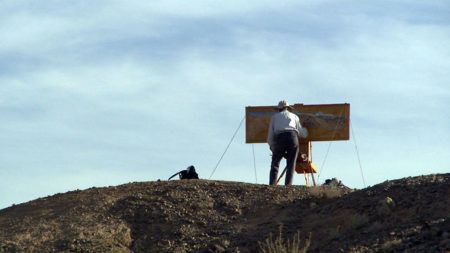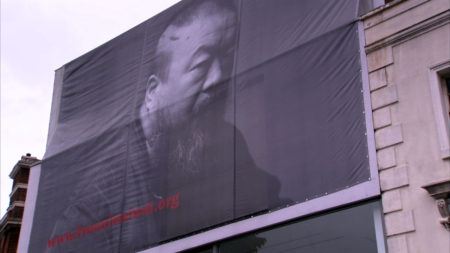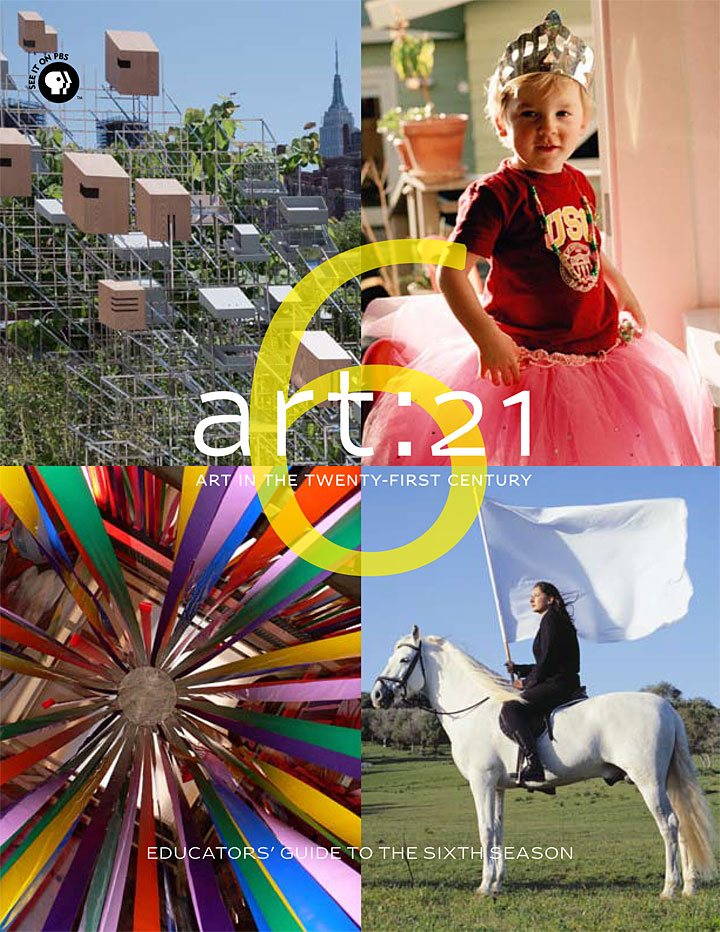Art in the Twenty-First Century
Season 6
Timely and timeless, global and local, beautiful and provocative, contemporary art challenges us to look at our world in new ways. Contemporary artists grapple with the complex issues of our time, ask tough questions, and make works that delight, amaze and sometimes unsettle audiences worldwide.
Season 6 includes 13 profiles of artists from five continents. Spanning the globe from Nigeria to New York City, from Beijing to Brazil, the episodes reveal the artists at work and speaking in their own words as they demonstrate the power of art to alter perception, challenge convention, and change how we see the world around us.
Included in the season are artists Marina Abramović, Ai Weiwei, David Altmejd, El Anatsui, assume vivid astro focus, Lynda Benglis, Rackstraw Downes, Glenn Ligon, Robert Mangold, Catherine Opie, Mary Reid Kelley, Sarah Sze, and Tabaimo.
Major underwriting for Season 6 of Art in the Twenty-First Century is provided by The National Endowment for the Arts, PBS, Agnes Gund, Bloomberg, The Andy Warhol Foundation for the Visual Arts, The Horace W. Goldsmith Foundation, The Broad Art Foundation, The Japan Foundation, Toby Devan Lewis.
Season 6 premiered in May 2012 on PBS.
Featured video
Season 6 of "Art in the Twenty-First Century" Trailer
January 4, 2012
Broadcast Episodes
-
How do artists respond to a world in flux? In what ways do artists act as agents of change, and what kinds of aesthetic choices do they make to express it?
This episode features artists who bear witness, through their work, to transformation—cultural, material, and aesthetic—and actively engage communities as collaborators and subjects.
-
Who and what limits our freedom of expression? In what ways do cultural differences affect our understanding of art and other forms of communication? How do an artist’s process and choice of medium affect our perception of his or her work?
This episode features artists who synthesize disparate aesthetic traditions, present taboo subject matter, discover innovative uses of media, and explore the shape-shifting potential of the human figure.
-
How do artists mine the past to explore the present? Why do some historical events shape the way we think today, and why have some been forgotten? In what ways do artists use their own histories to examine the human condition?
In this episode, artists play with historical events, explore and expose commonly held assumptions about historic ‘truth’, and create narratives based on personal experiences.
-
In what ways can art convey equilibrium or disequilibrium? What is reality? How do artists perceive and express it?
This episode features artists whose works explore the distinctions between balance and imbalance, and demonstrate that the smallest change in a line, a formal element, or a structure can be a radical proposition.



